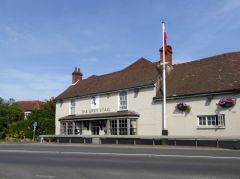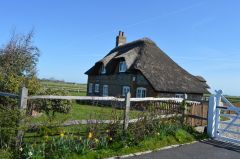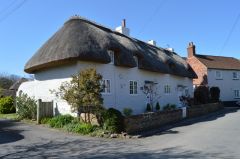
Sidlesham is a quiet village that is home to the Pagham Harbour Nature Reserve. The reserve is an important breeding area for over 200 species of birds who are attracted to the wide expanse of tidal mudflats.
The Reserve stretches to over 1500 acres, composed of saltmarsh, mudflats, farmland, reed beds and shingle beaches. Guided walks around the reserve leave from Sidlesham Ferry.
History
The history of Sidlesham goes back to at least the 7th century. Records from AD 683 show that Caedwalla gave the manor here to Bishop Wilfrid to provide funds for the abbey at Selsey. The manor was held by the Bishop of Chichester at the time of the Domesday Book in 1086, and the bishops held the estate until 1560.
In that year Queen Elizabeth exchanged less profitable estates for the manor of Sidlesham. The queen sold the manor into private hands in 1588, and it passed through several owners until it came to the Farrington family, who rented it out. The manor house itself passed in time to Sir Thomas Cuddon, a chamberlain of the City of London.
St Mary's Church
Sidlesham's attractive parish church, dedicated to St Mary Our Lady, dates in part to the 12th century, with nave arcades from around 1220. Unusually, the church is built of stone rubble, unlike most other churches in the area which are constructed of flint.
The nave roof is 13th century, and the church is entered through an 18th-century porch of timber and brick. There is an 18th-century brass candelabrum in the chancel, and an early 13th-century font under the north aisle arcade.
Clustered around Pagham harbour are a group of 18th-century buildings, though the Crab and Lobster Inn may be even earlier, as is the thatched cottage opposite. West of the church, on the south side of Church Lane, is a group of four picturesque thatched houses dating from the 17th century.
About Sidlesham
Address: Sidlesham,
West Sussex,
England
Attraction Type: Village
Location: 4 miles south of Chichester on the B2145
Location map
OS: SZ 8586 9890
Photo Credit: N Chadwick, licensed for reuse under the Creative Commons Licence
HERITAGE
 We've 'tagged' this attraction information to help you find related historic attractions and learn more about major time periods mentioned.
We've 'tagged' this attraction information to help you find related historic attractions and learn more about major time periods mentioned.
Find other attractions tagged with:
12th century (Time Period) - 13th century (Time Period) - 17th century (Time Period) - 18th century (Time Period) - 7th century (Time Period) - brass (Historical Reference) - Domesday Book (Historical Reference) - Queen Elizabeth (Person) -
NEARBY HISTORIC ATTRACTIONS
Heritage Rated from 1- 5 (low to exceptional) on historic interest
Pagham Harbour Local Nature Reserve - 1.4 miles (Countryside) ![]()
Church Norton, St Wilfrid's Church - 2.2 miles (Historic Church) ![]()
Chichester Ship Canal and Basin - 3.2 miles (Countryside) ![]()
Canon Gate - 3.6 miles (Historic Building) ![]()
Chichester Cathedral - 3.6 miles (Cathedral) ![]()
Chichester Roman Amphitheatre - 3.6 miles (Roman Site) ![]()
Chichester Roman City Walls - 3.6 miles (Roman Site) ![]()
Chichester Bishop's Palace Gardens - 3.6 miles (Garden) ![]()






